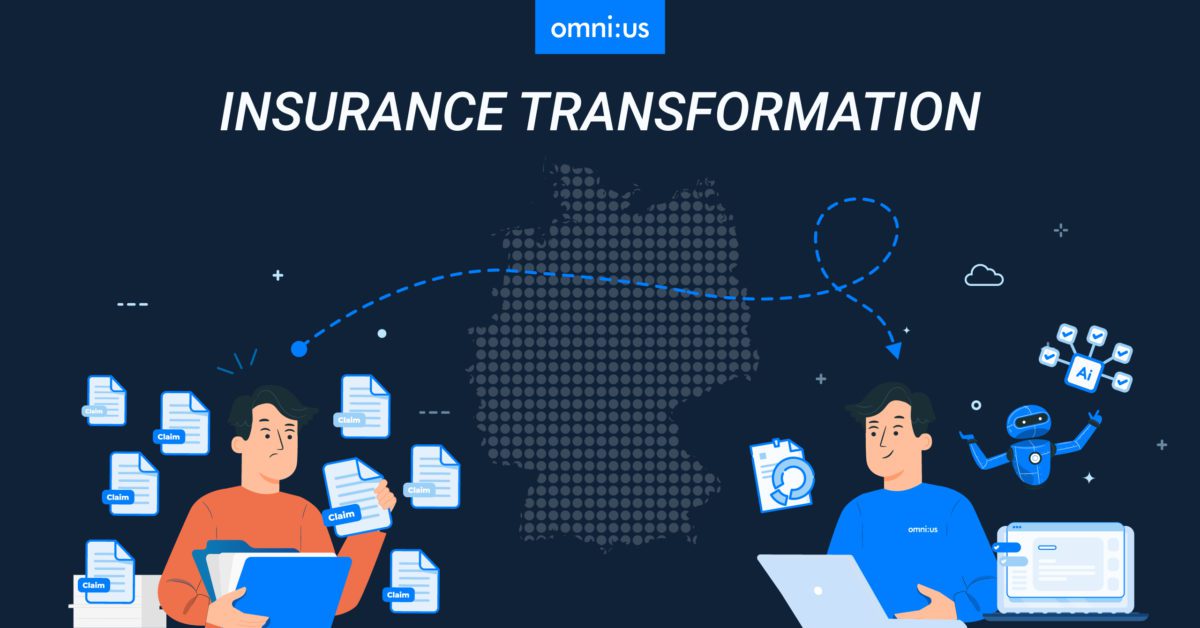
Capgemini’s World Insurance Report 2019 unsurprisingly showed some discrepancies between the desires of insurtechs and incumbents (big insurance). Apparently, fewer than 40% of incumbents want to build holistic technology infrastructure by collaborating with InsurTech firms, while more than 60% of InsurTechs (omni:us among them) wish to work with insurers to create such a foundation. In general, however, Capgemini’s data suggests a fairly even alignment of sentiment on collaboration. 90% of insurtechs said that partnerships were critical while 70% of major carriers echoed this – a high number for a traditionally conservative industry.
Many insurance companies are moving slowly to implement AI solutions, unsure of what investments to make in an environment where technology evolves rapidly. Capgemini’s report stated that while there is an industry-wide emphasis on technological development, there is a “lack of strategic focus“. The implication is that insurers are not yet at the point of understanding which technologies can provide the greatest benefit to the business. But, education comes with experience. And though it may not feel like it, it is evident that we’re still in the early days… with only 32% of incumbents currently collaborating with ecosystem partners.
Willis Towers Watson’s recent piece on collaboration similarly commented on the dichotomy, with a focus on speed: „The InsurTech market, by its very nature, moves fast. By contrast, most large insurers operate with deliberate decision processes that discourage impulsive decisions that could endanger the broader enterprise. In other words, there’s a potential mismatch.“
“Both partnering entities must be flexible and strive for a balance between the hierarchical nature of many traditional insurers and the flat organizational structure favored by InsurTechs.” But how flexible can a near-ancient entity be? Asia Insurance Review nailed it in a cheeky recent headline: “151-year-old seeks scrappy start-up for mutual benefits”. Hot take.
WTW point out that pace is a key factor: „Fail fast, learn fast is a useful maxim for carriers in relation to InsurTech-driven innovation. It’s very important to provide a safe environment where bold, quick-but-limited-scale decisions can be made by empowered teams (e.g., to launch proof of concepts or pilots); because an increasingly important accompaniment to creating the room to learn about InsurTech and grow — is to do it quickly.“
Something often ignored, the external connector between insurtech and incumbent, was emphasized in Capgemini’s report. It’s something we’ve valued from day one at omni:us, the power of agents and third party „system integrators“ who facilitate connections to the industry. These are experienced players in specific regions who maintain expansive networks and have deep industry knowledge. Crucial value is also derived from their often more objective view of the status quo and how our product fits into the puzzle.
At omni:us we’ve found that the pace of implementation and initial review is everything. And that the third-party consultant, agent, etc is often vital to smoothing the process. If we can’t get a speedy onsite installation and some meaningful results to iterate and improve upon, often we end up being stuck in the mud to the mutual chagrin of our client and engineering team.
The paradox here of course is that with everything AI, time is an essential requirement. Model training, ground truthing, these initial steps demand time to get underway before fine tuning and refinement. A common and unfortunate roadblock here is that once we get onsite to execute, we are not able to access certain data repos which are necessary to deliver. This is sometimes due to interdepartmental communications difficulties or unforeseen security protocols, but is also our failure in making our needs entirely clear. Regardless, this eats up time and patience.
The way around this, we’ve learned (sometimes the hard way), is to draw lines in the sand when it comes to expectations, and to make infrastructural and personnel requirements crystal clear from the get-go. This can be a painstaking process, but it is absolutely essential to getting projects of considerable depth and scale off the ground.
Read on about current trends in AI and more in our paper here
iStock/erhui1979


